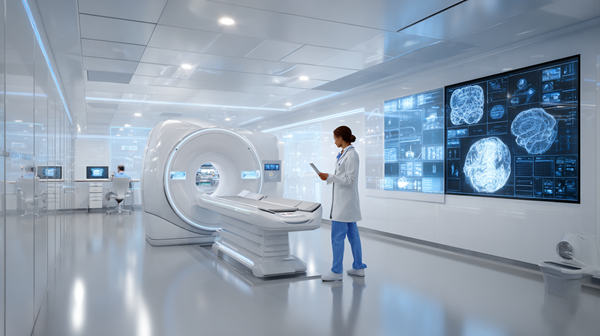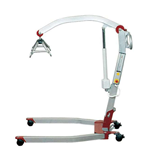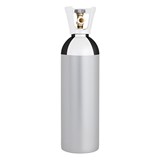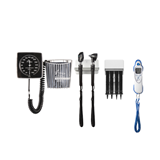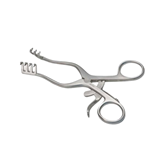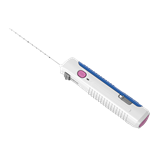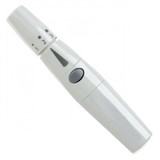Discover the top 5 medical devices revolutionising patient care in Australia in 2025. Learn how AI, portable imaging, wearables, POCT, and robotics are transforming healthcare delivery.
Key takeaways
- AI-enabled diagnostics: Devices like AI imaging assistants are slashing diagnosis time and improving accuracy in remote and regional clinics.
- Portable imaging: Handheld ultrasound machines are making real-time bedside diagnostics more accessible in Australia’s rural and emergency settings.
- Wearable health monitors: Continuous monitoring wearables are helping manage chronic conditions outside hospital walls, especially in aged care.
- Point-of-care lab testing: Compact diagnostic devices are improving early intervention and reducing pathology turnaround times.
- Robotics in surgery and rehabilitation: Surgical robots and robotic rehab tools are driving better outcomes and shortening recovery times in key Australian hospitals.
- High-impact sectors: Diagnostic imaging, remote care, surgery, rehabilitation, and oncology are leading device adoption in Australia, driven by wait time pressures, ageing demographics, and growing demand for personalised, preventative care.
Introduction: Why medical devices matter more than ever in 2025
Australia’s healthcare sector is being transformed by a new generation of medical devices designed to tackle ongoing challenges: staff shortages, ageing populations, regional care gaps, and cost pressures. These technologies aren’t just futuristic novelties, they’re solving real problems in real clinics across the country.
From hospitals in Sydney to community health centres in outback WA, clinicians are increasingly relying on smarter, faster, and more mobile tools to deliver timely, effective patient care. In this article, we explore five standout devices reshaping practice in 2025 and what you should consider if you’re investing in them.
AI-powered diagnostic imaging tools
AI in imaging isn’t just a buzzword anymore, it’s a clinical necessity. AI tools are now embedded in diagnostic imaging systems, helping radiologists detect anomalies like fractures, tumours, or lung nodules in seconds.
Practical advantages:
- Speed and consistency: AI pre-screens scans, flagging likely issues, allowing clinicians to prioritise urgent cases.
- Support in remote areas: In regional Australia where radiologists may not be onsite, AI bridges critical diagnostic delays.
- Integration with PACS: Systems like Canon and GE now offer AI-supported workflows integrated into Picture Archiving and Communication Systems (PACS).
In a pilot program at Royal Darwin Hospital, AI-assisted X-ray software cut report turnaround times by over 30%, enabling faster triage and improving ED throughput.
Considerations for buyers:
- TGA approval is required for clinical deployment.
- Check local compatibility with existing PACS or RIS platforms.
- Cloud vs on-premise models can affect cost and data security.
Portable and handheld imaging devices
Traditional imaging setups are bulky and tied to fixed locations. In 2025, portable ultrasound and X-ray devices are empowering frontline care providers.
Key features:
- Lightweight and wireless: Some models weigh less than 500g and connect via smartphone or tablet.
- Real-time remote consultation: Integration with telehealth enables live image sharing.
- Battery-powered: Ideal for outreach programs and rural GP clinics.
The NSW Health Rural Flying Doctor Service now equips its nurses with handheld ultrasounds for maternal and cardiac screening in remote communities.
What to assess before purchasing:
- Image resolution vs portability trade-off
- Compatibility with your EMR
- Training and credentialing requirements for non-radiologist users
Continuous health monitoring wearables
Wearable tech has moved beyond fitness. In clinical settings, devices now monitor vitals like ECG, oxygen saturation, blood glucose, and sleep in real time.
Common uses:
- Chronic disease management: Especially in managing diabetes, COPD, and hypertension.
- Post-discharge monitoring: Reduces hospital readmissions and enables early interventions.
- Aged care: Passive tracking helps prevent falls and detect deterioration early.
In Victoria, a major aged care provider adopted wearable ECG monitors with AI alerts. This cut hospital transfers by 23% in 12 months (source: Health Innovation Victoria, 2024).
Buyer tips:
- Confirm the device is TGA registered
- Check data integration with your clinical platform
- Clarify battery life and maintenance cycles
Point-of-care diagnostic devices
Point-of-care testing (POCT) is no longer limited to blood glucose or pregnancy tests. Compact multi-analyte devices can now perform CRP, D-dimer, HbA1c, influenza, and even COVID testing in under 10 minutes.
Benefits in Australian clinics:
- Reduced pathology bottlenecks: Especially in regional or remote centres with limited lab access.
- Faster treatment initiation: Immediate results enable same-visit diagnosis and treatment.
- Improved patient satisfaction: Less waiting, fewer follow-ups.
A GP in Mildura uses a new POCT analyser for respiratory infections. Instead of sending swabs to Melbourne, patients receive antiviral treatment on the spot when needed.
Key considerations:
- Reagent cost and shelf life
- Maintenance and calibration schedules
- Compliance with TGA in-vitro diagnostic (IVD) standards
Robotics in surgery and rehabilitation
Robotics are now assisting in precision surgery, physical therapy, and even stroke recovery programs. These technologies are becoming more cost-effective and widely used.
Use cases:
- Orthopaedic surgery: Robots improve accuracy in knee and hip replacements.
- Neurorehabilitation: Robotic exoskeletons help stroke patients regain mobility.
- Day surgeries: Robotic arms are now assisting in high-precision outpatient procedures.
Sydney Adventist Hospital introduced robotic-assisted laparoscopic surgery in 2024 and reported reduced complications and faster patient recovery times.
Procurement tips:
- High upfront investment but potential ROI through better patient outcomes
- Training and credentialing requirements
- Check if the device is supported by private health insurers for rebate eligibility
Top sectors benefiting most from new medical devices in 2025
As Australia’s healthcare sector continues to recover and innovate post-pandemic, several industries stand out for their adoption of new medical technologies. From regional hospitals to metropolitan clinics and allied health services, the effects of next-gen devices are not just theoretical , they’re reshaping patient care, efficiency, and even business models across multiple domains.
Diagnostic imaging and pathology: Faster, earlier, AI-enhanced detection
With the integration of AI-powered diagnostic platforms, portable imaging tools, and real-time data analysis, diagnostic imaging is experiencing a seismic shift. In Australia, where public imaging wait times have traditionally ranged from 3 to 6 weeks in some regions (AIHW, 2023), devices that reduce interpretation delays are proving transformative.
Key developments:
- Portable ultrasound and handheld MRI devices are enabling bedside or rural diagnosis without needing full imaging suites.
- AI-powered radiology assistants, like those integrated into CT and mammography workflows, are helping reduce diagnostic error rates and reporting backlogs.
Remote and primary care: Enabling decentralised, preventative care
Australia’s vast geography and growing ageing population (projected 21% of Australians over 65 by 2033 – ABS, 2024) place pressure on metro clinics and remote health services alike. This makes remote monitoring, point-of-care diagnostics, and wearable devices vital tools in extending care beyond traditional settings.
Where it’s helping:
- GP clinics and community health services are integrating connected ECGs, spirometers, and blood glucose monitors.
- Home-based aged care providers are adopting continuous vitals monitoring systems that automatically alert clinicians to anomalies.
Surgical and procedural care: Enhancing precision, reducing invasiveness
With surgical waitlists still a concern in public hospitals (median wait time for elective surgery in 2023 was 49 days, AIHW), robotic systems, smart surgical instruments, and real-time visualisation tools are becoming essential to improve efficiency and patient outcomes.
Emerging trends:
- Miniaturised robotic-assisted surgical systems are being introduced in orthopaedics and urology across both private and public hospitals.
- Augmented reality (AR)-guided surgery allows surgeons to visualise anatomy in 3D, reducing risk in complex procedures.
Rehabilitation and allied health: Boosting recovery and patient engagement
The demand for neurological rehab, physiotherapy, and speech pathology is growing rapidly as post-COVID care, stroke recovery, and NDIS-funded services expand.
What’s driving change:
- Smart rehab exoskeletons and wearables that track limb function and provide biofeedback for stroke patients.
- Virtual reality (VR) therapy tools for motor rehabilitation, especially in younger patients.
Oncology and chronic disease management: Personalised care at scale
The growing complexity of cancer care and chronic disease management (including diabetes, respiratory disease, and cardiac issues) demands personalised, data-driven approaches. In 2025, we’re seeing devices that combine genetic insights, continuous monitoring, and drug delivery systems being deployed more broadly.
Examples of application:
- Wearable insulin delivery systems now integrate with real-time glucose monitoring and dietary tracking apps.
- Smart infusion pumps and AI-based treatment planning are being trialled in major cancer centres.
Final thoughts: Future-proofing your device investment
Before adding any of these technologies to your practice, it’s crucial to assess more than just price. Consider how each device integrates with your current workflows, the staff training required, ongoing maintenance, and compliance obligations.
Key evaluation questions:
- Is the device TGA approved and registered?
- How does it integrate with your existing software and hardware?
- What support and training are offered?
- Is there local technical support and spare parts availability?
With patient expectations rising and care models evolving, staying ahead with the right technology can significantly improve outcomes, efficiency, and your facility’s competitive edge.

